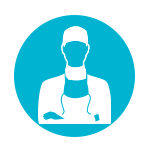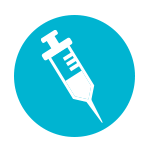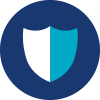What is cord blood banking?
Cord blood banking is the process of collecting umbilical cord blood at birth and storing it for future use. It’s a once-in-a-lifetime opportunity to save the most powerful source of stem cells your baby will ever have.
What is cord blood banking?
Cord blood banking is the process of collecting umbilical cord blood at birth and storing it for future use. It’s a once-in-a-lifetime opportunity to save the most powerful source of stem cells your baby will ever have.
What is cord blood banking?
Cord blood banking is the process of collecting umbilical cord blood at birth and storing it for future use. It’s a once-in-a-lifetime opportunity to save the most powerful source of stem cells your baby will ever have.
Your unborn baby may be part of the first generation to live beyond 100. Chances are they will need stem cells to stay healthy.
Did you know that you can secure the most powerful source of stem cells available within minutes of birth by choosing cord blood banking?
Your baby’s umbilical cord is possibly the richest available source of stem cells they will ever have. With cord blood banking, you can collect these powerful cells from the umbilical cord and placenta and store them for use in stem cell therapies.
Current stem cell therapies can treat a range of 80+ diseases, including immune and blood disorders. In most treatments currently available, doctors will often use stem cells from a donor, such as a sibling.
The main reason why millions of parents choose to bank their baby’s stem cells is the incredible potential they hold for regenerative medicine therapies in the future. In years to come, your baby could use their own, perfectly matched stem cells to repair damaged tissue, regenerate old organs or even replace body parts.
Today, cord blood banking is already changing lives and there have already been more than 1 million stem cell transplants around the world since the 1980s.[1]
Doctors and scientists believe that cord blood stem cells are one of the cornerstones of regenerative medicine and may soon offer therapies for many incurable diseases, such as cerebral palsy, autism and diabetes.[2][3]
More than a decade ago, it was predicted that 1 in 3 of us will require a regenerative therapy.[4] Today, those chances could even higher. As part of the first generation that could live beyond 100 – choosing cord blood banking ensures your baby will have their own stem cells ready for use if they ever need them.
You only get one chance to bank your baby’s cord blood – in the moments after birth. To receive more information about the cord blood banking process and cord blood storage benefits, download your Parents’ Guide now.
Read our stem cell storage FAQs for answers to the most common questions about cord blood banking and stem cell storage.
Your unborn baby may be part of the first generation to live beyond 100. Chances are they will need stem cells to stay healthy.
Did you know that you can secure the most powerful source of stem cells available within minutes of birth by choosing cord blood banking?
Your baby’s umbilical cord is possibly the richest available source of stem cells they will ever have. With cord blood banking, you can collect these powerful cells from the umbilical cord and placenta and store them for use in stem cell therapies.
Current stem cell therapies can treat a range of 80+ diseases, including immune and blood disorders. In most treatments currently available, doctors will often use stem cells from a donor, such as a sibling.
The main reason why millions of parents choose to bank their baby’s stem cells is the incredible potential they hold for regenerative medicine therapies in the future. In years to come, your baby could use their own, perfectly matched stem cells to repair damaged tissue, regenerate old organs or even replace body parts.
Today, cord blood banking is already changing lives and there have already been more than 1 million stem cell transplants around the world since the 1980s.[1]
Doctors and scientists believe that cord blood stem cells are one of the cornerstones of regenerative medicine. These stem cells are currently being used in thousands of clinical trials for many incurable diseases, such as cerebral palsy, autism and diabetes.[2][3]
More than a decade ago, it was predicted that 1 in 3 of us will require a regenerative therapy.[4] Today, those chances could be even higher. As part of the first generation that could live beyond 100 – choosing cord blood banking ensures your baby will have their own stem cells ready for use if they ever need them.
You only get one chance to bank your baby’s cord blood – in the moments after birth. To receive more information about the cord blood banking process and cord blood storage benefits, download your Parents’ Guide now.
Read our stem cell storage FAQs for answers to the most common questions about cord blood banking and stem cell storage.

1 MILLION STEM
CELL TRANSPLANTS

7,500+
CLINICAL TRIALS

5 MILLION
UNITS STORED

22 CELLS4LIFE
SAMPLE RELEASES
What are the benefits of cord blood banking?
Here’s why you should save cord blood today:
LEARN MORE ABOUT TREATMENTS USING CORD BLOOD STEM CELLS
Why choose Cells4Life?
Cells4Life is the leader in cord blood banking in the UK, with more UK samples in storage than any other bank. Everything about our service has been designed for one purpose – to provide your baby and your family with the best long-term health protection available.
Here are just a few cord blood banking benefits when you choose to store with with Cells4Life:
- 2-3x more stem cells with CellsPlus*
- Multiple treatments with SecurePlus
- Dual location storage with SecurePlus
- Most comprehensive range of services
- The UK’s only placenta storage bank
- Year-round collection
- Dedicated couriers
- Industry leading technology
- HTA licensed
Cord blood banking: what happens on the day?
Cord blood banking is non-invasive and should have no impact upon your birth plan or delivery process. The collection will take place in a separate room, after the third stage of labour. Either your consultant or a trained and licensed phlebotomist, provided by Cells4Life, can perform the collection. Once they collect the cord blood, one of our dedicated medical couriers will come to the maternity unit to collect the sample and bring it directly back to our laboratory. We will then process the cord blood, perform various tests and place it securely into long term storage. Should your child or a family member ever need to use the sample, all you have to do is contact us and we will liaise with your medical facility to release the stem cells for treatment.
STEM CELL COLLECTION – WHAT’S INVOLVED?
Why bank cord blood?

Baby’s perfect match
Storing your baby’s own cord blood ensures that they will always have access to their perfect stem cell match. This means that any stem cell treatment or replacement organ is available without the need for rejection drugs. Your baby’s stem cells may also be a perfect match for a sibling and is always a partial match for the parents.
Whilst suitable stem cells may be available from donor registries, the chances of finding a tissue match can be as low as 30%. Having your child’s perfect match ready and waiting ensures that they always have access to the treatment they need, without risk of rejection.

Bank it, don’t bin it
Cord blood is far too important to waste, yet, if it is not collected and banked, it is routinely thrown away. By storing your baby’s precious umbilical cord blood, you can ensure this valuable resource is always available to protect them for the rest of their life.
This is why over 4 million families worldwide have chosen to protect their baby’s health by banking their cord blood.[6]

How is cord blood used? The future of medicine
Uses of cord blood are increasing faster than ever before as the promise of regenerative medicine is realised. Currently, there are more than 1,000 clinical trials investigating umbilical cord blood – and new discoveries happen all the time.[7] At Cells4Life, we have already released 21 cord blood samples for the treatment of conditions such as autism, cerebral palsy and Diamond-Blackfan anaemia.
Why should I bank my baby’s own cord blood?
Cord blood banking preserves powerful stem cells and ensures your baby can enjoy the benefits of cord blood storage:

Choice
Banking your child’s own cord blood and tissue means that they, and the rest of your family, have exclusive use of the stem cells – how you need them, when you need them.

Protection
Your baby’s cord blood is their perfect biological match, which means treatments can take place without risk of rejection. It is also possible siblings and parents can use the sample too.

Security
The chances of finding a stem cell match in a public cord blood bank can be as low as 30% and for some ethnic groups, the chances are even lower. Private cord blood banking ensures your child’s perfect match is ready and waiting, whenever they need it.
Quick questions…
How is umbilical cord blood collected?
The phlebotomist collects the blood by inserting a blood bag needle into the umbilical vein. Once blood ceases to drain, they seal the bag and dispose of the needle.
The sample is labelled and placed into a protective overwrap. For cord tissue, a long undamaged section of the umbilical cord is selected and cut.
It is cleaned thoroughly and placed into the tissue pot along with saline solution. The pot is labelled and overwrapped, and both samples are packaged back into your collection kit.
How is cord blood stored?
Is cord blood banking affordable?
The cost of cord blood banking does not have to be expensive. Pricing varies according to the process and service you choose. At Cells4Life, we offer different pricing plans starting from just £550.
How can cord blood be used?
Today, cord blood can be used to treat more than 80 conditions. In future, it is expected to treat many other diseases and disorders as stem cell technology continues to advance.
Trials are already underway investigating the application of umbilical cord stem cells as a therapy for neurological conditions such as cerebral palsy, stroke and even autism. Progress has also been made for the treatment of diabetes and heart disease. Preliminary data from these clinical trials suggest that these powerful cells could even one day be used to regrow organs.
FIND OUT MORE, REQUEST YOUR WELCOME PACK TODAY
All you need to know to make an informed decision.
Provide your contact details to request:
– Complete Welcome Pack and Parent’s Guide
– Information via email
– Contact from our specialist advisors
*based on our peer reviewed publication showing that TotiCyte delivers 2.2 to 3 times more haematopoietic stem cells at the point of use than other cord blood processing systems in use in the UK.
References
1. Gratwohl A et al. “One million haemopoietic stem-cell transplants: a retrospective observational study.” Lancet Haematology 2015 Mar;2(3):e91-100 <https://www.ncbi.nlm.nih.gov/pubmed/26687803>
2. “Umbilical Cord Blood Improves Motor Skills in Some Children With Cerebral Palsy” Duke Health News & Media, accessed 18 March 2019, https://corporate.dukehealth.org/news-listing/umbilical-cord-blood-improves-motor-skills-some-children-cerebral-palsy
3. Dawson et al. “Autologous Cord Blood Infusions Are Safe and Feasible in Young Children with Autism Spectrum Disorder: Results of a Single‐Center Phase I Open‐Label Trial” Stem Cells Translational Medicine 6;5:1332-1339
4. Harris, David T. “Cord Blood Stem Cells: A Review of Potential Neurological Applications” Stem Cell Review 2008 4:269–274 <https://stemcelltreatmentnow.com/files/studies/Cord-Blood-Stem-Cells-A-Review-of-Potential-Neurological-Applications.pdf>
5. Levitt, Alice. “A Ghost (Heart) of a Chance” Houstonia Magazine, accessed 18 March 2019. <https://www.houstoniamag.com/articles/2017/1/23/texas-heart-institute-new-research-ghost-heart>
6. Ballen KK et al. “Umbilical cord blood donation: public or private?” Bone Marrow Transplant 2015 Oct;50(10):1271-8
7. Clinical Trials Gov, accessed 18 March 2019, https://clinicaltrials.gov/ct2/results?cond=&term=cord+blood&cntry=&state=&city=&dist=









